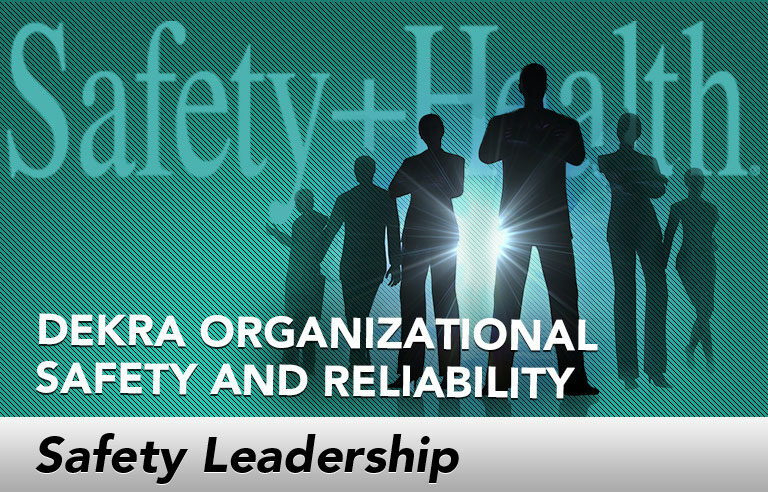Safety Leadership: Autopsy of an injury: Uncovering 18 million exposures in one activity

Editor’s Note: Achieving and sustaining an injury-free workplace demands strong leadership. In this monthly column, experts from global consulting firm DEKRA Insight share their point of view on what leaders need to know to guide their organizations to safety excellence.
We know that safety does not truly improve unless exposure is identified and then controlled, reduced or eliminated. Shrink the pool of exposure and incidents go down. Injury rates can give insight into what’s happening in the organization’s pool of exposure, but the number and severity of incidents are influenced by luck.
Consider this: If an organization had 100,000 exposure events, the result could be zero recordable injuries or more. The zero outcome could be the result of the effectiveness of the layers of control that were in place to protect the employee, or it could be simply the result of a series of lucky outcomes. With each exposure, employees were subject to a state of vulnerability to injury.
The state of vulnerability is the same whether someone is hurt or not. If I stand below a person working overhead with a hammer and the hammer falls, whether it lands on my head or on the ground is a matter of chance. I’m lucky if it falls on the ground, but not so fortunate if it hits my head. Whatever the outcome, the exposure is still the same.
When a person is exposed, the outcome (whether the hammer hits the ground or his or her head) is out of that person’s control. Organizations good at safety find ways to bring the exposure under control. They implement procedures or apply engineering solutions that shrink the pool of exposure and minimize dependency on employee behavior.
18 million exposures
Now picture this: An employee climbs several feet on a unit to install a strap on a shipping container. He finishes, steps back, stumbles and falls 5 feet onto his back.
The executives of one organization I worked with didn’t need to imagine this scene. They saw each exposure for themselves on facility camera footage. They saw the employee step back without looking, take his hand off the handhold, and then lose his footing on a raised portion of grating and fall. Fortunately, he was only bruised, but a fall from that height could have been a lot worse.
After watching the video, the senior leaders didn’t discuss exposure, but rather what the employee did wrong and how they should discipline him. These are good people committed to safety. They just needed help thinking in terms of exposure.
“How often do people climb onto these units to do this task?” I asked.
“Two times for each unit loaded,” the executives said.
“How many units are loaded per day across the system?”
“25,000.”
“That’s 50,000 exposures per day, or about 18 million exposures per year,” I pointed out.
By shifting the conversation away from employee behavior and reframing it in terms of exposure, the leadership team instantly recognized that, with this activity, people would need to perform preventive actions perfectly 18 million times in a year, no matter the weather conditions, level of fatigue or production urgency.
The conversation changed. The executives stopped talking about what the employee did wrong and started discussing what the organization could do better. They discussed exposure, prevention strategies, the fairness of discipline and whether the discipline system was helping create the culture they desire.
When leaders understand the concept of a pool of exposure, it can change the way they think about safety and prevention. By guiding the discussion away from what the employee did wrong and employee-focused control efforts to one centered on the total volume of exposure and the tools available to reduce it, we can create momentum for better exposure control that will protect workers each time they perform an activity – whether it’s just once or 18 million times.
This article represents the views of the authors and should not be construed as a National Safety Council endorsement.
 Don Groover, CIH (retired), CSP, is senior vice president with DEKRA Organizational Safety and Reliability (dekra-insight.com). Groover develops solutions that leverage the latest technology to improve safety performance in client organizations.
Don Groover, CIH (retired), CSP, is senior vice president with DEKRA Organizational Safety and Reliability (dekra-insight.com). Groover develops solutions that leverage the latest technology to improve safety performance in client organizations.
Direct to your inbox: Sign up to be notified in email about new "Safety Leadership" columns.
Post a comment to this article
Safety+Health welcomes comments that promote respectful dialogue. Please stay on topic. Comments that contain personal attacks, profanity or abusive language – or those aggressively promoting products or services – will be removed. We reserve the right to determine which comments violate our comment policy. (Anonymous comments are welcome; merely skip the “name” field in the comment box. An email address is required but will not be included with your comment.)

